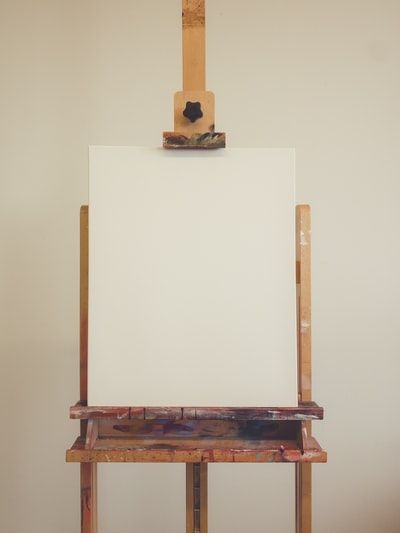Are you living the good life?
How can visualisation turn that daydream into a life goal?
How can visualisation turn that daydream into a life goal?

How often have you dreamed about your perfect house or the ideal job? You’ve probably decorated it, picked the furniture or built the pool, you’ve seen the corner office with your name on the door, all in your mind’s eye. How often is this dream attached to a lotto win or discovering you’ve been left a mansion by a long-forgotten spinster second uncle twice removed?
But what if you could turn the dream into a reality by the power of the mind?
It is at this point that I should very clearly point out that I have zero background in visualisation. I'm like you - exploring the possibilities of making my dreams real. And it is via the profound words of Albert Einstein that I embark on this journey: “Insanity is doing the same thing over and over and expecting the same results”. I have spent years on the daydream, but the lotto win is yet to happen and there’s no hope of a surprise inheritance with the cost of living being what it is, and so it’s time to change how I dream.
Visualisation is a tool used by Positive Psychologists, Councillors and Life Coaches all over the world. According to the Cambridge Dictionary, it is “the act of visualising something or someone over and over”, forming a picture in your mind and seeing it develop in your inner eye.
Oprah Winfrey is a proud ambassador for the power of visualisation and has spoken highly of its importance in how she has achieved success. She is not alone in this practice. There are many high profile celebrities and athletes that all swear by the power of visualisation but what about the normal everyday individual? Those of us who want more than the dream of a lotto win in order to achieve our goals.
I once interviewed a series of women on their success - they included a fashion designer, a professional home organiser, a food blogger and a stay at home mum starting up her own business. I was curious about their success and amongst these women was Angela, founder of Sort My House a professional organiser, who has a habit of achieving her New Years Resolutions. I myself have never achieved one, so this alone was enough to impress me.
But the Aha moment was not in the resolution itself, but in essence how she approached each resolution. The key it seems was to break the resolution up into smaller achievable chunks: if the resolution is to have a body like Kate Beckinsale or write a novel, then don’t focus on the end goal instead focus on the next week, where you may have called a gym to find out more, or had a glass of wine and written an idea in a notebook. Angela turned her resolutions into a series of small achievable goals, and she only focused on each individual step whilst keeping in the back of her mind the image of her end goal. The perfect domino effect.
It is this approach that can switch a dream into an aspirational and achievable goal. Visualisation of a goal can manifest into a reality as it starts to influence the small everyday decisions we make that support the path to the goal.
But what if you could turn the dream into a reality by the power of the mind?
It is at this point that I should very clearly point out that I have zero background in visualisation. I'm like you - exploring the possibilities of making my dreams real. And it is via the profound words of Albert Einstein that I embark on this journey: “Insanity is doing the same thing over and over and expecting the same results”. I have spent years on the daydream, but the lotto win is yet to happen and there’s no hope of a surprise inheritance with the cost of living being what it is, and so it’s time to change how I dream.
Visualisation is a tool used by Positive Psychologists, Councillors and Life Coaches all over the world. According to the Cambridge Dictionary, it is “the act of visualising something or someone over and over”, forming a picture in your mind and seeing it develop in your inner eye.
Oprah Winfrey is a proud ambassador for the power of visualisation and has spoken highly of its importance in how she has achieved success. She is not alone in this practice. There are many high profile celebrities and athletes that all swear by the power of visualisation but what about the normal everyday individual? Those of us who want more than the dream of a lotto win in order to achieve our goals.
I once interviewed a series of women on their success - they included a fashion designer, a professional home organiser, a food blogger and a stay at home mum starting up her own business. I was curious about their success and amongst these women was Angela, founder of Sort My House a professional organiser, who has a habit of achieving her New Years Resolutions. I myself have never achieved one, so this alone was enough to impress me.
But the Aha moment was not in the resolution itself, but in essence how she approached each resolution. The key it seems was to break the resolution up into smaller achievable chunks: if the resolution is to have a body like Kate Beckinsale or write a novel, then don’t focus on the end goal instead focus on the next week, where you may have called a gym to find out more, or had a glass of wine and written an idea in a notebook. Angela turned her resolutions into a series of small achievable goals, and she only focused on each individual step whilst keeping in the back of her mind the image of her end goal. The perfect domino effect.
It is this approach that can switch a dream into an aspirational and achievable goal. Visualisation of a goal can manifest into a reality as it starts to influence the small everyday decisions we make that support the path to the goal.

The benefits of visualisation
The key to effective visualisation is to focus on the things you want to happen, not the things you don’t. A simple example is preparing for an interview, it is easy to get caught up in nervousness and worrying about all the things that can go wrong. By focusing instead on the things that could go right, your approach to the interview will completely change.
Visualisation of your wants can lead to increased confidence. By focusing on success can lead to it happening.
Imagination has no limits and as long as you neutralise any negative self-doubts that influence the imagination and apply some discipline and determination then you can turn almost anything you think about into a reality.
Visualisation can benefit absolutely everyone. There is no barrier to who can use visualisation, all it needs is a little time and focus to become embedded.
The key to effective visualisation is to focus on the things you want to happen, not the things you don’t. A simple example is preparing for an interview, it is easy to get caught up in nervousness and worrying about all the things that can go wrong. By focusing instead on the things that could go right, your approach to the interview will completely change.
Visualisation of your wants can lead to increased confidence. By focusing on success can lead to it happening.
Imagination has no limits and as long as you neutralise any negative self-doubts that influence the imagination and apply some discipline and determination then you can turn almost anything you think about into a reality.
Visualisation can benefit absolutely everyone. There is no barrier to who can use visualisation, all it needs is a little time and focus to become embedded.
Visualisation in Practice
Vision boards
Creating a vision board can be a fun and creative way to put your goals at the forefront of daily life. Whether you choose to have a simple piece of paper with ideas all over it or you go full out with a full board with cutouts and images, is up to you. The time it takes to create the board allows your brain to process the thoughts and for that image to become more than just a dream.
Write a goal journal
If a vision board doesn’t quite inspire then try a goal journal. This is not a diary but a place to describe in detail everything you want in life. From career goals, relationship ideals, the perfect home, family aspirations, or fitness objectives write with as much detail as possible to make these goals vivid in your mind. Encouraging yourself to live your life as if you’ve already achieved your goals.
It’s all in the detail
Add as detail as you can to your visualisations, including colours, sounds, smells and emotions. The more detail you add the better - consider who is with you on your journey, why are they there? What do they see when they look at you? How do you feel about it all? These little details can be incredibly motivating.
Take daily actions
Focus on the present and set small daily or weekly goals that move you forwards towards your visualisation. Don’t get too wrapped up in the big picture, making small steps will move mountains.
Persevere
There are always going to be moments where challenges will rear their heads, but during these times, grit your teeth and persevere towards your goals. These moments don’t need to alter your path but may add a new element to the journey, something that you can learn from. Include them in your visualisations and imagine how you would succeed.
As you visualise the life you want, remember you actually have to take steps towards making it real. Visualisation is so much more than a daydream, and there will be hard work along the way. But full embracing what it is you are working towards can truly make the biggest difference.
Vision boards
Creating a vision board can be a fun and creative way to put your goals at the forefront of daily life. Whether you choose to have a simple piece of paper with ideas all over it or you go full out with a full board with cutouts and images, is up to you. The time it takes to create the board allows your brain to process the thoughts and for that image to become more than just a dream.
Write a goal journal
If a vision board doesn’t quite inspire then try a goal journal. This is not a diary but a place to describe in detail everything you want in life. From career goals, relationship ideals, the perfect home, family aspirations, or fitness objectives write with as much detail as possible to make these goals vivid in your mind. Encouraging yourself to live your life as if you’ve already achieved your goals.
It’s all in the detail
Add as detail as you can to your visualisations, including colours, sounds, smells and emotions. The more detail you add the better - consider who is with you on your journey, why are they there? What do they see when they look at you? How do you feel about it all? These little details can be incredibly motivating.
Take daily actions
Focus on the present and set small daily or weekly goals that move you forwards towards your visualisation. Don’t get too wrapped up in the big picture, making small steps will move mountains.
Persevere
There are always going to be moments where challenges will rear their heads, but during these times, grit your teeth and persevere towards your goals. These moments don’t need to alter your path but may add a new element to the journey, something that you can learn from. Include them in your visualisations and imagine how you would succeed.
As you visualise the life you want, remember you actually have to take steps towards making it real. Visualisation is so much more than a daydream, and there will be hard work along the way. But full embracing what it is you are working towards can truly make the biggest difference.
author bio
Lucienne Miller
Lucie first came face to face with anxiety disorders in her teens. OCD became her closest friend until her early 30's, when she came across resilience and positive psychology. Then everything changed. She had found a way forward. From this turning point, Lucie regained control. She is now a mum of four, wife, business owner and eternal student. Finally she has discovered the strength in her stress.
Write your awesome label here.

